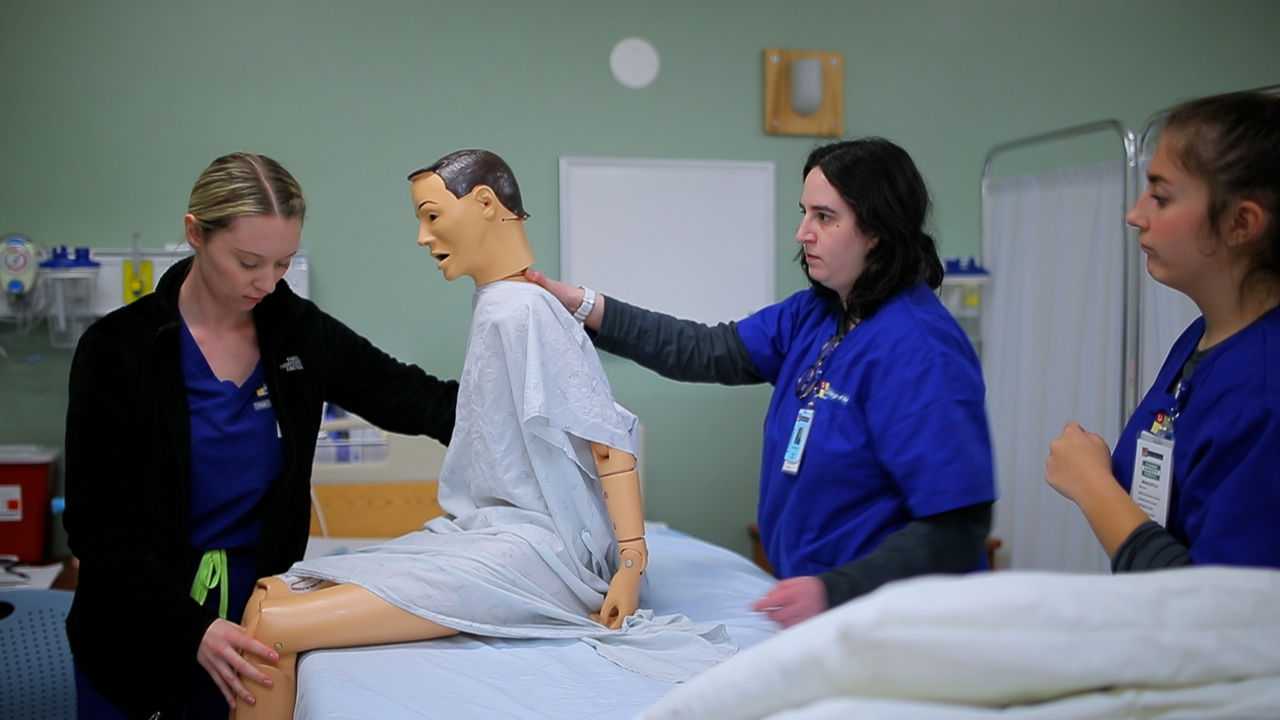The idea of drawing a blood sample or dressing a wound might feel intimidating to someone who’s interested in nursing. What if you mess up and hurt the patient? Patients trust healthcare providers to provide high-quality care and compassion, a big responsibility for the provider. It’s also a responsibility for colleges and nursing institutes to graduate well-prepared nurses able to deliver safe and accurate patient care.
Luckily, nursing classrooms have come a long way with simulation technology, an important part of modern nursing training. Simulation technology allows nurses to practice new skills on a manikin before they try the same procedure on a human patient. The simulation training is designed to develop clinical reasoning abilities, teach medical skills, promote effective communication with patients, and encourage teamwork, according to The Online Journal of Issues in Nursing. Simulation labs mimic real-life situations with guided experiences.
Types of Simulations
A clinical simulation lab allows the learner to experience in a variety of medical situations to learn medical procedures and how to handle scenarios such as blood pressure dropping or a heart attack. In healthcare, a patient simulator is typically called a “manikin” (to differentiate from fashion mannequins). The patient simulators, or manikins, provide different levels of realism with some manikins delivering a very accurate medical emergency. Generally, the simulators come in three categories of realism, called low-fidelity, mid-fidelity, and high-fidelity. The patient manikins range from infant to elderly patients to mimic different life stages and health issues.
Some patient simulators represent a specific part of the body, such as an arm for IV training or a body for CPR training. The goal is to teach specific tasks or procedures on a single body part. Other patient simulators are life-like full bodies equipped with latest computer technology that can be programmed for various health scenarios, such as a heart attack, post-partum hemorrhage, or mass casualty disaster.
Some patient simulators you might work on as a nursing student include the following:
Pediatric simulator. A pediatric simulator represents the body of an infant or child whose needs will be different from an adult patient. The pediatric patient may express childlike responses, including facial expressions, speech, and movement.
Birth simulator. These female patient simulators mimic labor, delivery, newborn baby emergencies, and postpartum issues for the mother.
Patient simulator. These simulators represent adult patients, and nursing students might practice giving medications or assessing vital signs. At the high end, a complex simulator like SimMan can mimic complex body systems and can be programmed to speak.
Volunteer simulators. Students also learn procedures on live volunteers, such as during a mass casualty disaster exercise with both live volunteers and simulation manikins. For example, All-State Career Schools in Essington recently held a tornado exercise for students to learn how to triage head trauma, respiratory failure, and other serious injuries. Besides critical technical skills, students also learned teamwork and effective communication.
Get started on your nursing career training today by exploring the nursing program options available at a Fortis campus near you. Fortis is one of the largest nursing education providers in America, recognized for their leadership in educating tomorrow’s nurses with state-of-the-art simulation technology. Click here for more information on our nursing programs or call us today at (855) 436-7847 and speak to one of our career counselors.

